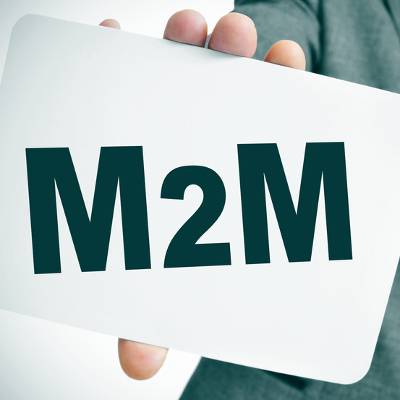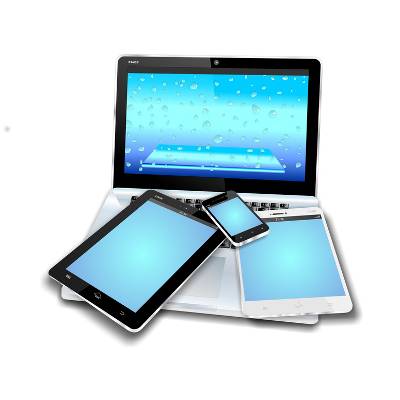Have any question?
Call (409) 861-4450
Call (409) 861-4450
 Mobile devices are challenging the traditional perception of the office environment. When employees bring their own devices to work, this is called Bring Your Own Device (BYOD), and it’s an increasingly popular trend. Initially thought of as a threat, BYOD is proving to be a valuable option for businesses wanting to increase productivity, so long as it’s regulated properly.
Mobile devices are challenging the traditional perception of the office environment. When employees bring their own devices to work, this is called Bring Your Own Device (BYOD), and it’s an increasingly popular trend. Initially thought of as a threat, BYOD is proving to be a valuable option for businesses wanting to increase productivity, so long as it’s regulated properly.
 Mobile devices are changing the way that businesses look at the workforce, but one of the main draws (and possibly detriments) is how the industry continues to change rapidly as new solutions are made available. In order to maximize your business’s efficiency with mobile devices, it’s important to consider these three trends shaping the way that organizations handle modern mobile device management.
Mobile devices are changing the way that businesses look at the workforce, but one of the main draws (and possibly detriments) is how the industry continues to change rapidly as new solutions are made available. In order to maximize your business’s efficiency with mobile devices, it’s important to consider these three trends shaping the way that organizations handle modern mobile device management.
 Mobile is all the rage nowadays. Industry giants such as Microsoft and Apple claim to have mobile devices that make the PC obsolete. It makes for great marketing, but do mobile devices have what it takes to keep employees productive inside and outside of the workplace? The statistics say no, but the gap is closing. Here are three mobile myths all CIOs should consider.
Mobile is all the rage nowadays. Industry giants such as Microsoft and Apple claim to have mobile devices that make the PC obsolete. It makes for great marketing, but do mobile devices have what it takes to keep employees productive inside and outside of the workplace? The statistics say no, but the gap is closing. Here are three mobile myths all CIOs should consider.
 As a technology consumer, you might realize that your mobile device’s hard drive storage space is somewhat lackluster compared to your needs. Countless photos, applications, and videos take up a ton of space, and if something were to cause the device to fill up suddenly, you’d be out of luck. How can you prevent this? You can start by using these four tips to get around your device’s lack of storage.
As a technology consumer, you might realize that your mobile device’s hard drive storage space is somewhat lackluster compared to your needs. Countless photos, applications, and videos take up a ton of space, and if something were to cause the device to fill up suddenly, you’d be out of luck. How can you prevent this? You can start by using these four tips to get around your device’s lack of storage.
 The Internet of Things is changing the face of web-connected devices as we know it. Some would argue that the world isn’t ready for the IoT, but it’s on its way nonetheless. But what really constitutes the Internet of Things? InfoWorld suggests that a lot of what the public sees as the Internet of Things shouldn’t be classified as IoT devices. Therefore, we need a more substantial definition for this revolutionary phenomenon.
The Internet of Things is changing the face of web-connected devices as we know it. Some would argue that the world isn’t ready for the IoT, but it’s on its way nonetheless. But what really constitutes the Internet of Things? InfoWorld suggests that a lot of what the public sees as the Internet of Things shouldn’t be classified as IoT devices. Therefore, we need a more substantial definition for this revolutionary phenomenon.
 Anyone who has been following the recent trends in technological growth will come to the conclusion that mobile technology is more popular, and has taken its rightful place at the head of the pack. 2014 may see even more drastic shifts toward the mobile revolution, cementing its place as the preferred mode of computing.
Anyone who has been following the recent trends in technological growth will come to the conclusion that mobile technology is more popular, and has taken its rightful place at the head of the pack. 2014 may see even more drastic shifts toward the mobile revolution, cementing its place as the preferred mode of computing.
 Before the XXII Olympic Games in Sochi, Russia, there were concerns from several influential entities about the data security at the Olympics. These concerns were reported leading up to the games and on the eve of competition, the NBC Nightly News with Brian Williams ran a story by reporter Richard Engel that intimated that visitors to Sochi were immediately being hacked when they signed into the public WiFi accounts provided to athletes, media, and guests of the games.
Before the XXII Olympic Games in Sochi, Russia, there were concerns from several influential entities about the data security at the Olympics. These concerns were reported leading up to the games and on the eve of competition, the NBC Nightly News with Brian Williams ran a story by reporter Richard Engel that intimated that visitors to Sochi were immediately being hacked when they signed into the public WiFi accounts provided to athletes, media, and guests of the games.
 At this moment, people in the United States are experiencing one of the most brutally cold winters in recent memory and can't wait for the relief that spring will bring. Cold weather makes humans do crazy things, like leave their technology in freezing temperatures for long periods of time. Is it ok for your gadgets to chill out, or not?
At this moment, people in the United States are experiencing one of the most brutally cold winters in recent memory and can't wait for the relief that spring will bring. Cold weather makes humans do crazy things, like leave their technology in freezing temperatures for long periods of time. Is it ok for your gadgets to chill out, or not?
 The advantage of staying on top of the latest technology trends is that your business can utilize the newest solutions designed to give your company the competitive edge. New technology makes doing business easier and increases profits. There are three hot technology trends in 2014 that you should know about. We've looked at two trends already, now to our third, mobile computing.
The advantage of staying on top of the latest technology trends is that your business can utilize the newest solutions designed to give your company the competitive edge. New technology makes doing business easier and increases profits. There are three hot technology trends in 2014 that you should know about. We've looked at two trends already, now to our third, mobile computing.
Get the Knowledge You Need to Make IT Decisions
Technology is constantly evolving, and keeping up can feel overwhelming. Whether you want to understand cybersecurity threats, explore automation, or learn how regulations like PCI DSS impact your business, we’ve made it easy to access clear, straightforward insights on key IT topics.
Learn more about what NetWorthy Systems can do for your business.
NetWorthy Systems
701 W. Division Ave Suite 100
Orange, Texas 77630